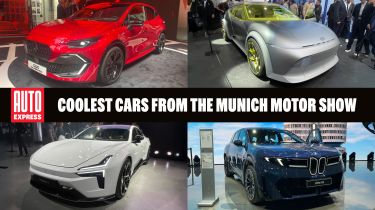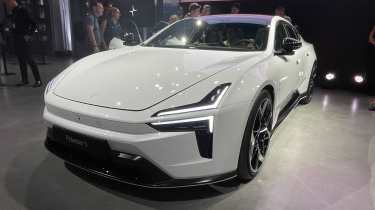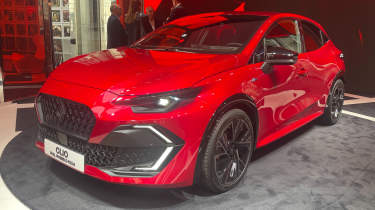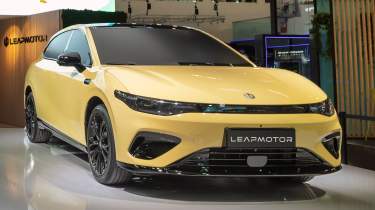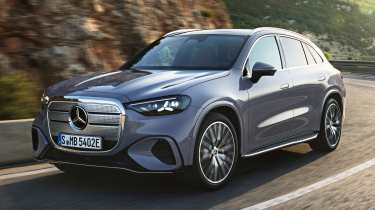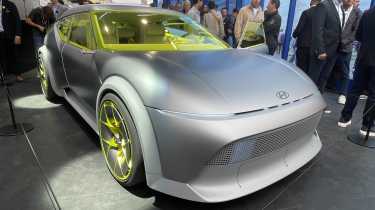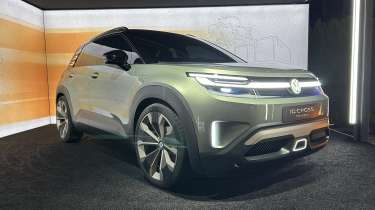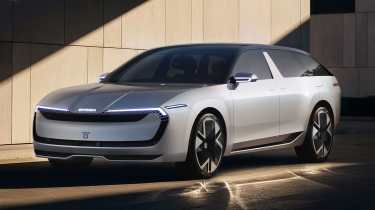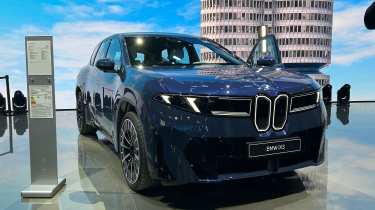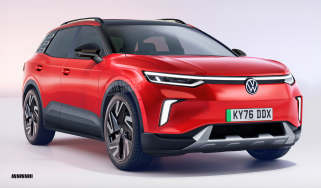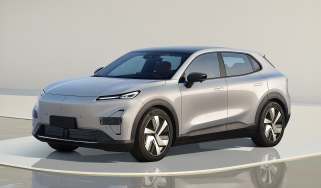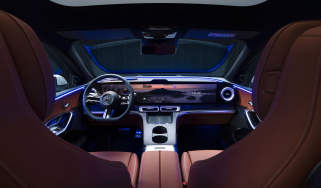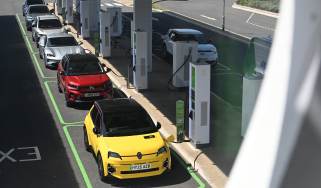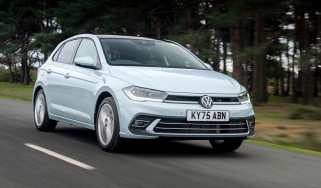10 coolest cars from the Munich Motor Show – and why they matter
We look back at the Munich Motor Show and pick out the coolest cars and concept cars unveiled
Motor Shows don’t happen very often, but when big ones roll around, manufacturers usually go all out by unveiling some cool concepts and amazing cars, many of which are likely to be released in the coming months and years. And in 2025, the Munich Motor Show was no exception.
From family hatchbacks to ultra-cool electric coupés, this show had it all. But which cars were the coolest? We racked our brains to pick what we believe to be the most exciting cars we saw, plus we explain what it is about them that makes them matter.
While most of these cars aren’t currently available to buy, if you are in the market for changing your car, check out the Auto Express Buy A Car service, where you can find anything from a tiny Dacia Spring at less than £15,000, to the super luxurious Range Rover SUV from just over £100,000.
Top 10 coolest cars from the Munich Motor Show
| Ranking | Model |
| 10 | Polestar 5 |
| 9 | Renault Clio |
| 8 | Leapmotor B05 |
| 7 | Mercedes GLC |
| 6 | Hyundai Concept Three |
| 5 | Volkswagen ID. Cross |
| 4 | Cupra Raval |
| 3 | Skoda Vision O |
| 2 | BMW iX3 |
| 1 | Audi Concept C |
Read on to see our selections for the coolest cars we saw at this year's Munich Motor Show..
10. Polestar 5
Why it matters: The Polestar brand is still in its relative infancy, and this car will either make or break it as a top-shelf EV purveyor.
Polestar has been a thorn in Tesla’s side since the 2 first arrived in 2020, and the 3 and 4 SUVs have also done a reasonable job of irking the big German executive manufacturers. However, the Polestar 5 is a big new step in a risky direction for this fledgling Scandinavian brand. With a near-£90,000 starting price, the 5 is aiming for the top of the prestige EV tree, and that means going head-to-head with models like the Porsche Taycan and Lotus Emeya.
Unlike its rivals, though, Polestar doesn’t have much in the way of a heritage to lean on, so it really needs to appeal both technically and physically if it’s going to tempt buyers away from the legacy carmakers. While it shares a similar front end design to its larger cousins, the Polestar 5 is a suitably handsome machine that hasn’t diverged too far from the Precept concept car on which it’s based.
Underneath is where things become particularly interesting, though, as the chassis is an all-new, bonded aluminium setup that’s similar to the one found in the Lotus Elise. Power wise, the dual-motor variant produces up to 871bhp while returning up to 351 miles on the WLTP combined cycle. In other words, it looks like Polestar isn’t playing around.
UK sales: September 2025, from £89,500
9. Renault Clio
Why it matters: Even in its latter life, the Clio is still topping sales charts across Europe, and showing the value of affordable ICE cars.
From Papa and Nicole to Thierry Henry’s Va Va Voom and Formula One-inspired Williams hot hatches, the Clio is an icon, and this sixth-generation car makes a bolder styling statement than most of those that have come before it.
Even if you don’t like the sharp-edged looks, there’s no arguing with the hybrid powertrain’s efficiency of 72.0mpg, given power is up by 15bhp to 158bhp, knocking a full second off the 0-62mph time.
No less than 29 safety systems highlight the tech that Renault has crammed into the car, and wheel sizes will range from 16 to 18 inches.
The bad news is that the UK has got quite the wait for the new car. It’ll be in left-hand drive markets early next year, but the UK is going to be over a year behind, so we’ll have a stock of the old cars to keep Clio fans here happy for a while yet.
UK sales: Summer 2027, from around £20,000
8. Leapmotor B05
Why it matters: More than just another Chinese brand, Leapmotor has Stellantis backing and the B05 is car four of a six-model push within two years of arriving on UK shores.
The name may not be catchy, but subtle yet appealing styling and a promised high-spec low-price approach mark out the all-electric B05.
Longer and wider than the Volkswagen ID.3 that it will count as a key rival, the B05 should cost well under £30k when it hits the UK next summer as a hatchback sister to the B10 SUV aimed at a younger audience.
But potentially most interesting, and significant as it could be a first for a Chinese firm, Leapmotor is developing a performance brand called Ultra, which would mean a B05 with both performance and styling enhancements. Chinese brands have majored on tech and price so far, so one with some sporting credentials would be a big step forward.
UK sales: Summer 2026, from around £28,000
7. Mercedes GLC
Why it matters: The new, all-electric GLC is critical to Merc’s success in the EV space. Its efforts to date have fallen wide of the mark, but, on paper at least, the new SUV could have just what it takes to transform the brand’s fortunes….
We’ve not picked the electric Mercedes GLC as a show star because I like the way it looks, or even because the technology hidden within is particularly innovative. No, the reason it sits on this page alongside the Audi Concept C and Skoda Vision O (below) is because it’s so critical to the brand’s success in the EV space.
To date, Merc’s electric cars have failed to capture the hearts and minds of both pragmatic buyers and car enthusiasts alike – and for good reason. The EQC was a compromised, heavy and inefficient first effort, while the EQE and EQS models didn’t offer the quality, technology, or driving experience you’d expect of a Mercedes.
But the GLC, with its new platform, huge 39-inch Hyperscreen and polarising front end does things differently; and following a brief ride in a pre-production model, certainly feels better resolved than its predecessors. Its biggest worry will come in the form of BMW’s iX3, which on paper, beats the Merc on almost every metric. It’ll make for an interesting Auto Express twin test, if nothing else…
UK sales: Spring 2026, from £60,000 (est)
6. Hyundai Concept Three
Why it matters: Hyundai’s Ioniq EV brand hits the mainstream with a sporty-looking hatchback to be based on the Concept Three show car.
Hyundai has hit some serious heights with its electric cars - the Kona is a former Auto Express Car of the Year, as is the radically styled and popular Ioniq 5 - and now the big Ioniq 9 is making waves as it arrives in the UK. The Ioniq 6 saloon is maybe less of a high, but you can’t win them all.
But the Concept Three, which Hyundai has made no secret of morphing in the Ioniq 3 next year, has the potential to be the biggest story of them all, coming into the sub-£30k hatchback market with sporty styling, clever tech and, in the future, a hot hatch N version building on the Ioniq 5 N’s success.
The more concept car bits obviously won’t stay - from the coach doors to plexiglass rear spoiler and absence of touchscreen system in the minimalist interior that’s said to have been based on a living room - but the basic form is that of the production version designed in tandem with the show car. Which will make it unique against more SUV-esque rivals.
UK sales: Summer 2026, from around £28,000
5. Volkswagen ID. Cross
Why it matters: Following in the footsteps of the ID. Polo, the even more fashionable ID. Cross will bring SUV style to VW’s electric small-car class.
Volkswagen has laid its cards on the table, revealing plans to reinstate famous nameplates such as Polo and Tiguan on its next-generation electric cars. Part of that portfolio will be the ID. T-Cross – previewed at the Munich Motor Show by this: the ID. Cross concept.
Based on the same platform at the ID. Polo, it’ll get a front-driven motor and a choice of batteries that’ll unlock a range of more than 250 miles. It’s arguably an even more important car than the Polo, too, given the (not so) recent rise of the SUV. Due in production form next year, before going on sale later – if Volkswagen can price it right, this Renault 4 and Ford Puma Gen-E rival could quickly become a fixture in the UK’s top 10 best sellers.
UK sales: 2027, from £30,000 (est)
4. Cupra Raval
Why it matters: Cupra is leading the charge, no pun intended, on VW Core’s next-gen models that will make its EVs accessible to more European buyers.
The Cupra Raval is not just an important new car for the Spanish brand, but the entire group as it’ll be the first to arrive on the VW Group’s more affordable EV platform. It will share the same underpinnings as the VW ID. Polo and Skoda Epiq, but Cupra is hoping its more eccentric design language and high performance chassis additions will take it one step further in terms of driving dynamics and engagement.
It was still under its final layer of camouflage at the Munich show, but has been confirmed to include a 200bhp-plus power figure and confirmation of a mechanical limited-slip differential on high-spec models. It’ll also feature the next generation of Cupra interior design and interior tech.
But the main reason it’s on this list is because Cupra and its Spanish team have been largely responsible for developing the new MEB+ platform that underpins both this, and its VW Group cousins.
The stakes are high, but then we think the effort’s been put in exactly the right place to bring the right cars to market for crucially the right price. Raval will be our first insight into whether the plan has worked.
UK sales: mid-2026, £22,000(est)
3. Skoda Vision O
Why it matters: estate cars are a declining breed, but Skoda doubles down with a gorgeous wagon that adds desirability to practicality.
That’s a Skoda? It may look like a personnel carrier for Star Wars stormtroopers but it’s actually the Skoda Octavia wagon of 2030. The concept car “takes our design language to the next level,” boasts CEO Klaus Zellmer, with its ultra-clean bodysides, ramrod straight beltline, huge wheels and vast glasshouse creating a hunk of automotive minimalism.
It’s equally pared back inside, taking the Tesla Model 3’s clean, symmetrical dashboard concept and finishing it in sustainable materials, neutral colours and ambient light that soothes the human body clock. Also like a Tesla it eschews a driver’s info screen but overcompensates with Horizon Display, a panoramic digital band across the top of the dash. Using the touchscreen or click wheel, occupants can configure whatever info they want in their eyeline. Skoda nervously showed the interior to its high-mileage estate drivers, and received the thumbs-up.
Why do we have to wait until 2030? Skoda needs Volkswagen Group’s vehicle architecture, which will pack the processing power for Horizon Display and next-generation autonomous driving, plus far longer electric range. It could also feature hybrid power: “we want to keep all avenues open”, says the boss, especially with Europe under pressure to relax its 2035 ban on new combustion cars.
UK sales: 2030, and Skoda has started “feasibility studies to stay in today’s price bracket”. So from £28,000
2. BMW iX3
Why it matters: its tech – including a peerless 500-mile EV range – will shape YOUR next BMW, whatever the engine.
The BMW hype tornado has left its ‘Neue Klasse’ electric car zero margin for error: “we have recognised the opportunity to set a new benchmark across all relevant technology in the car, an opportunity that only comes once in a lifetime,” said CEO Oliver Zipse, unveiling the iX3 with the project’s typical understatement.
A high bar but one convincingly cleared. The iX3 50 xDrive posts the highest range of any EV on European sale, and the punchiest DC charging rate (400kW DC) which sucks in 231 miles of range in just 10 minutes.
By optimising every component, and orchestrating them via an all-new electronic nervous system with prodigious processing power, the iX3 goes, stops, handles and rides just like a BMW should, as we found out when we drove a prototype earlier this summer.
It feels lighter and more agile than any 2.2-tonne electric SUV should. Inside, a new digital display sweeps around the prow of the dash, making lots of info just a quick glance away. This, along with clever automated lane changes operated by eyesight, and BMW’s new minimalist exterior design and calmer cabins, will be rolled out across 40 models in the next two years. Resistance is futile.
UK sales: March 2026, from £58,000
1. Audi Concept C - show star
Why it matters: This won’t just be the car that convinces you that Audi is still relevant, but it also might just be one that proves an electric sports car can be desirable.
Ignore the word ‘concept’ when it comes to Audi’s show star, because you’re effectively looking at a new electric sports car that won’t just have the job of convincing people that an electric sports car is desirable, but that Audi is still a leader in design and desirability.
I’ve been fortunate enough to see the Concept C a few times over the Munich show season, but it made the biggest impact when sitting next to the new Porsche 911 Turbo S at the VW Group’s pre-show preview.
The two are not rivals, and potential buyers won’t likely be choosing between the two, but if there was a visual metaphor for sports cars of the past and the future, it’s right there. The irony, of course, is that much of the development work has been started and done by Porsche, and yet we’re told Audi will actually beat it to market.
Yet the main reason that it goes right to the top of this list is due to what else it represents on behalf of Audi. Life is complicated, and while some manufacturers are intent on turning cars into your personal assistant, friend or even therapist, Audi is being much more of a realist in reminding us the car is a machine. If you’re into cars, you’ll like the Concept C.
UK sales: mid-2027, £70,000(est).
Did you know you can sell your car through Auto Express? We’ll help you get a great price and find a great deal on a new car, too.

